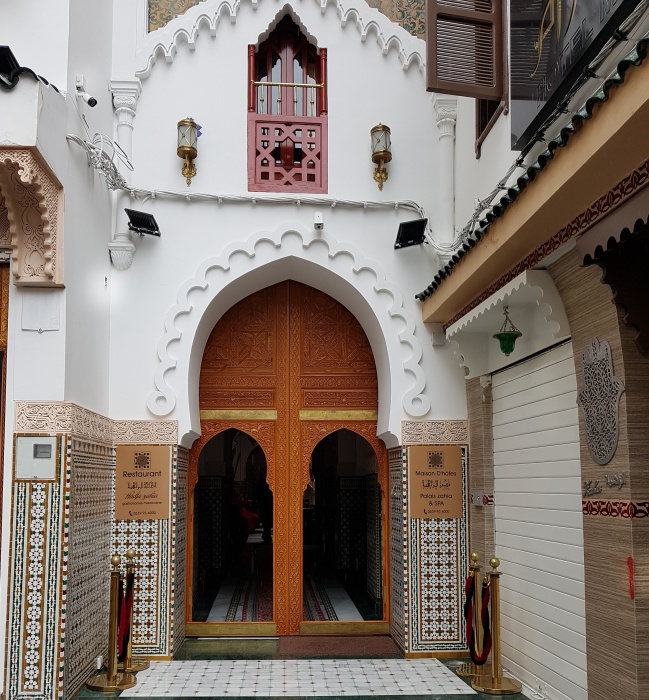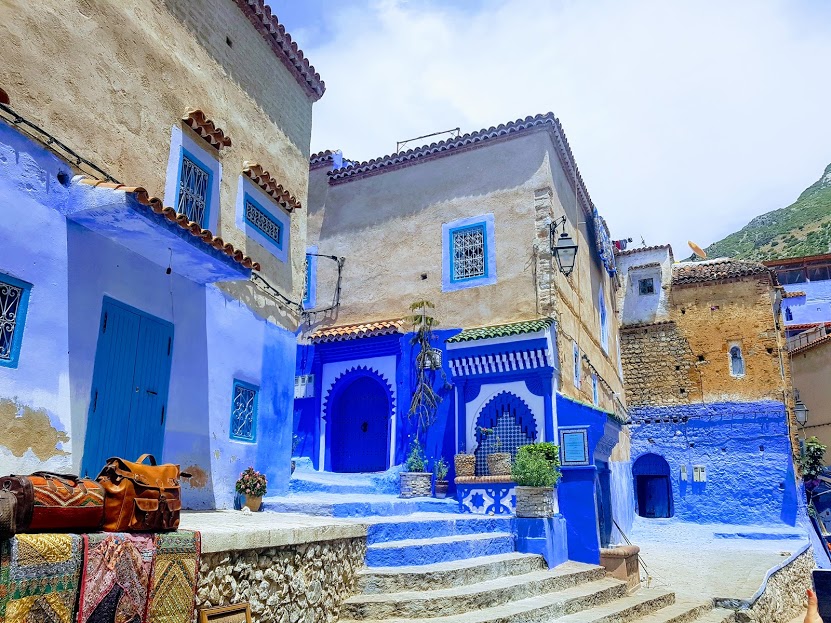
Morocco is a Muslin tolerant country. Though most people are religious, they are generally easy-going, and most Moroccan women don’t wear a veil, though they may well wear a headscarf. Morocco doesn’t have a dress code as in other Muslim countries, such as Saudi Arabia. Every woman dresses according to her religious beliefs and fashion style. One may find a wide variety of women clothes that vary from the country side of Morocco to the urban areas. Clothing also varies between what women wear while out and what they wear for special events.
The Muslim faith recommends that women should wear modest clothes. Yet, the interpretation of this varies widely. A lot of young women in Morocco wear headscarves. This may look as if Morocco is a very conservative country. In fact, it doesn’t reflect the truth.
Many young Moroccan women wear headscarf. In most cases the headscarf is a fashion statement. Usually women wear tight jeans and blouses yet wearing headscarf whose color matches the color of handbag and shoes. They may also put some make up too. This dress doesn’t reflect religious beliefs. Rather, it reflects a fashion style.
The Muslim interpretation of women dress differs. Women religious dresses varies from one Muslim country to another. Hijab for example is among those interpretations. The word hijab is a general term for modest Muslim dress and applies to scarves that cover the hair and neck. This type of scarf is the head covering worn by some Moroccan women. In addition to the headscarf, the rest of the dress should be modest and loose to ovoid showing the details of a woman’s body except the face, hand and feet.
The djellaba – a hooded robe – is the usual garment of Moroccan women in the urban areas. It’s traditionally worn with a headscarf that doesn’t cover the hair completely. In fact, Djellaba is originally a man garment. Women also decided to wear it to express their equality to man. The fabric and style are obviously not the same.

In some areas like Tetouan, in the north of Morocco, woman used to wear the Djellaba with a veil called a litham that covers women’s mouth. It is usually a white piece of cloth with embroidery that women would use to cover the mouth and tied behind the head.
During the fight for independence, especially in the 1940s, the djellaba was a symbol of nationalism and a shield of identity. Today, the djellaba is worn without the litham or scarf and the hood is just for decoration
Recently in Morocco, a new form of dress was introduced. It is the burka. The burka is the form of Islamic dress that hides the full face and body. The burka is often associated with Afghanistan where women were forced to wear it always when they were out in public.
The burka has never been the dress of Moroccan women. It is the influence of other Muslim countries. Actually, a very small minority of women wear burka in Morocco- a country where modernity and tradition live together and whose king Mohammed VI, fosters moderate Islam. Burka usually reflects the woman’s background and level of education.
Lately Moroccan authorities have banned the manufacturing, marketing and sale of the burka. The burka could help criminals and terrorists hide their identities on the one hand. On the other hand, beyond immediate security concerns, the real worry for the moderate Moroccan government is the spread of radical Islam.
Another Muslin women dress is called Nikab. It is mainly worn by women in Arab countries, but some Muslim women from Western countries also choose to wear it as it is the case for burka. The nikab is a head covering and scarf that conceals the face - but leaves the eyes exposed.
The covering usually flows down to the mid-back and may carry on down to the mid-chest at the front.
Clothes are particularly important in the Moroccan society. Many Moroccans, especially in rural areas, may be offended by clothes that do not fully cover parts of the body considered “private”, including both legs and shoulders, especially for women. It is true that in cities Moroccan women wear short-sleeved tops and knee-length skirts. However, in the rural areas women are required to respect the traditional local dress, not out of religious beliefs, but out of respect to the cultural norms









